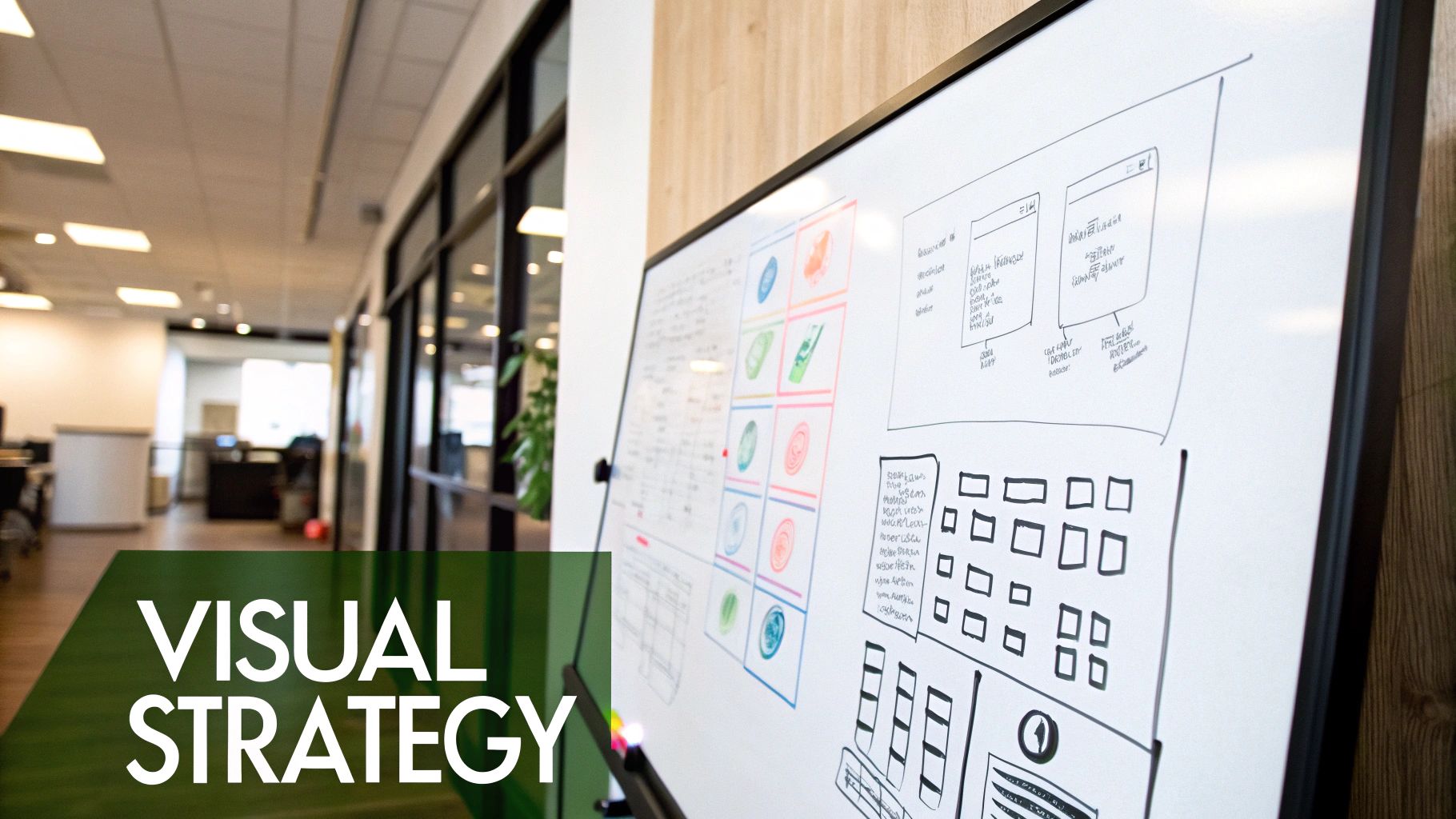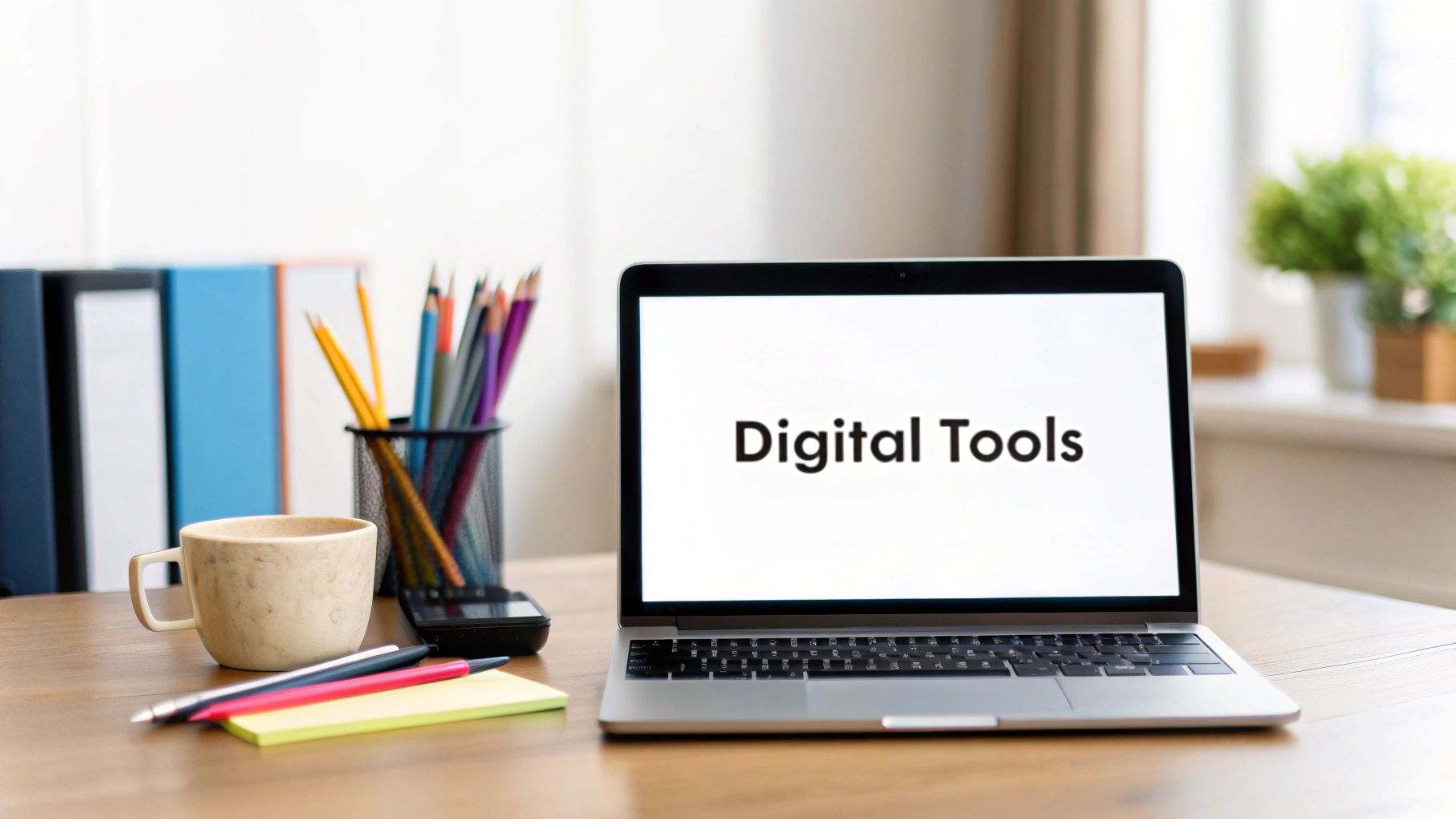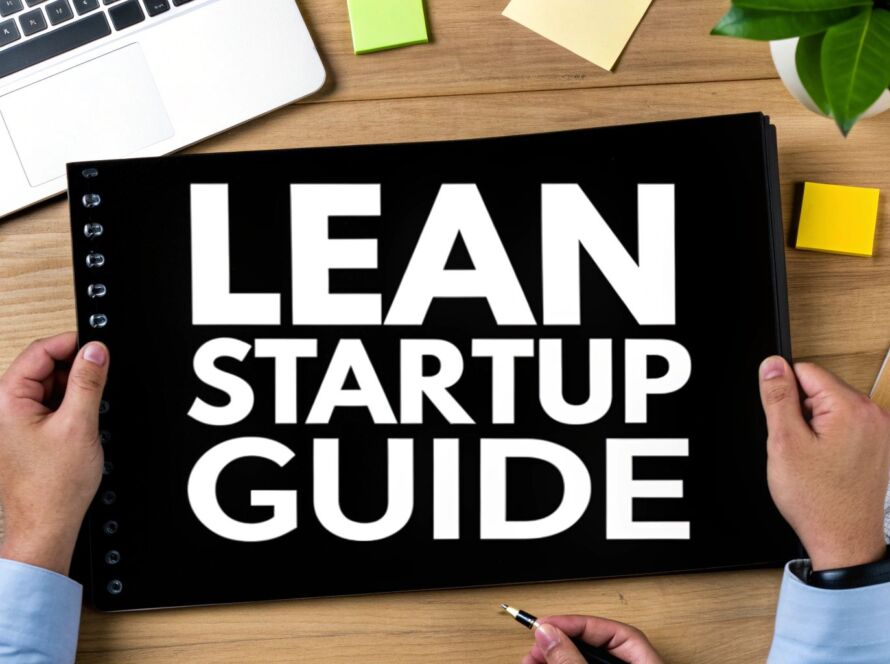Getting Started with the Business Model Canvas
The Business Model Canvas is a practical approach that brings strategic planning to life on a single page. Rather than getting lost in lengthy traditional business plans, this visual tool helps you see how different parts of your business work together to create and deliver value. Think of it as a dynamic blueprint that evolves with your business – one that's especially valuable as you test new ideas and adapt to market changes.
Why Use a Business Model Canvas Template?
The Business Model Canvas offers clear advantages for businesses at any stage. For new startups, it provides a structured way to refine concepts and attract funding. Established companies use it to evaluate their current model and spot new opportunities. The template guides you through examining every crucial aspect of your operation – from how you'll make money to how you'll serve customers. This comprehensive view helps teams identify potential issues early and ensures everyone shares the same understanding of how the business works.
How to Effectively Use a Business Model Canvas Template
Success with the Business Model Canvas starts with methodically working through each component. Begin by identifying who your customers are and what specific value you offer them. Then map out how you'll reach these customers and build relationships with them. Next, outline the key resources, activities and partnerships needed to deliver on your promises. Finally, determine your revenue sources and cost structure. Remember that this isn't a one-time exercise – the real power comes from regularly updating your canvas as you learn and grow. A recent study of small businesses found that those using the Business Model Canvas reported greater satisfaction with their operations, showing its practical impact.
Exploring the Nine Building Blocks
The Business Model Canvas consists of nine interconnected building blocks that tell your business's complete story. At its heart is the Value Proposition – the unique benefits you offer customers. The Customer Segments block defines exactly who you're serving, while Channels shows how you'll reach them. Customer Relationships describes how you'll interact with clients over time. The Revenue Streams section explains how you'll make money, supported by the Key Activities your team must perform. Key Resources covers the assets you need, and Key Partners identifies crucial external relationships. Finally, the Cost Structure outlines your major expenses. As Alexander Osterwalder, who created the Business Model Canvas, emphasizes – this tool helps you understand how all these elements work together to build a thriving business.

Mastering the Nine Building Blocks

The business model canvas template consists of nine essential building blocks that work together to create a successful business. Each component represents a vital aspect of your organization – from how you create value to how you capture it. Let's explore how these pieces fit together to build something remarkable.
Defining Your Value Proposition
The Value Proposition sits at the core of your business model – it's what sets you apart and keeps customers coming back. Think beyond just products and services to the real difference you make in customers' lives. For instance, when you buy a phone, you're not just getting a device – you're gaining the ability to connect with loved ones, capture precious moments, and access the world's information. Your value proposition should answer two key questions: What pressing problem do you solve? And why should customers choose your solution over others?
Understanding Your Customer Segments
Your customers are the lifeblood of your business. By clearly defining distinct customer groups, you can better serve their unique needs and wants. Consider a clothing retailer – they might serve different segments like fashion-forward young professionals, budget-conscious families, and luxury shoppers. Each group has different preferences, shopping habits, and price sensitivity. Getting crystal clear on who you serve allows you to tailor everything from your marketing to your product development.
Reaching Your Customers Through Channels
Getting your offering to customers requires the right mix of channels – the paths and touchpoints you use to reach and serve them. These could include your website, social media, retail stores, sales teams, or distribution partners. A B2B software company might combine digital marketing, industry events, and direct sales to connect with potential clients. Your choice of channels can make or break your ability to deliver value and grow your customer base.
Building and Maintaining Customer Relationships
Strong customer relationships are built on trust, care, and consistent delivery of value. This building block focuses on how you attract customers and keep them coming back. A subscription box service succeeds by personalizing each customer's experience, offering exclusive perks, and providing stellar support. Different customer segments may need different approaches – from self-service options to white-glove treatment.
Generating Revenue Streams
Money makes your business model sustainable. Revenue streams represent the various ways you generate income from your value proposition. A modern newspaper might earn money through print subscriptions, digital memberships, sponsored content, and events. Understanding which revenue streams work best helps you focus your efforts and resources where they matter most.
Key Activities: What You Need to Do
These are the critical tasks required to deliver on your promises to customers. For a software company, key activities include writing code, testing features, supporting users, and continuously improving the product. Executing these activities with excellence is essential for creating real value and staying competitive.
Key Resources: What You Need to Have
Every business needs specific assets to function and thrive. These resources might be physical (like a restaurant's kitchen), intellectual (like patents), human (like skilled employees), or financial (like working capital). Identifying and securing the right resources gives you the foundation to build something amazing.
Key Partnerships: Who You Need to Work With
No business is an island. Strategic partnerships help you achieve more than you could alone. A car manufacturer relies on relationships with parts suppliers, dealerships, and financing partners. Great partnerships multiply your capabilities and open new opportunities for growth.
Managing Your Cost Structure
Understanding what it costs to run your business is crucial for sustainable success. Your cost structure includes everything from materials and labor to marketing and overhead. A manufacturer needs to track raw material costs, production expenses, distribution, and more. Smart cost management isn't about cutting corners – it's about investing wisely in what creates the most value for customers.
These nine building blocks work together as a system. By understanding how they connect and support each other, you can create a business model that not only works but thrives. The key is keeping focused on delivering real value while building the capabilities needed to do it profitably and sustainably.
Building a Future-Ready Business Model

Let's explore how businesses can use the Business Model Canvas to create lasting success. This proven framework helps companies rethink their operations and find new ways to deliver value to customers. By taking a structured approach, you can make smart choices about which technologies and strategies will have the biggest positive impact.
Finding Growth Opportunities with Your Canvas
Start by examining each area of your business model canvas with fresh eyes. Look at your customer segments – could you reach new audiences through social media and digital marketing? Consider your value proposition – would an easy-to-use mobile app make your services more accessible? For example, a local gym might add online fitness classes to serve busy professionals who can't always make it to in-person workouts. This systematic review helps you spot opportunities to better serve customers through thoughtful use of technology.
Choosing the Right Tools for Your Business
Once you've identified promising opportunities, carefully evaluate which tools will work best for your specific needs. Research different options, weigh the costs and benefits, and think through how each technology would affect your day-to-day operations. For instance, a customer relationship management (CRM) system could help you track interactions and personalize service, but you'll need to factor in training time and integration with existing systems. Take time to find solutions that truly align with your goals rather than chasing the latest trends.
Making New Tools Work for You
Successfully adding digital tools requires more than just installing new software. You'll need to update your processes, train your team, and adjust your business model canvas to reflect the changes. If you're launching an online store, this means rethinking everything from marketing to shipping logistics. You might partner with delivery services and revise your cost structure. By considering all these elements upfront, you can ensure a smooth transition that strengthens your business.
Keeping Things Running Smoothly
While embracing new technologies, it's crucial to maintain excellent service throughout the process. Monitor how changes affect your operations and customer experience. Use your business model canvas to track progress and keep all parts of your business working together effectively. For example, as you add digital support channels, make sure they integrate well with your in-person customer service. This balanced approach helps you avoid disruptions while building stronger foundations for the future. With careful planning and execution, you can create positive changes that help your business thrive for years to come.
Building Sustainable Growth for SMEs

Small and medium-sized enterprises (SMEs) encounter distinct challenges as they work to establish their place in the market. The business model canvas template offers these companies a clear path forward, helping them map out their key offerings, understand their customers, and run their operations efficiently. Let's explore how this practical tool can make a real difference for growing businesses.
Identifying Core Value and Target Customers
Many SMEs struggle to articulate what sets them apart from competitors. The business model canvas provides a concrete framework for defining a compelling value proposition that connects with specific customer groups. Take a local bookstore – while it may not match big retailers on price, it can thrive by offering personal book recommendations, hosting author events, and carefully selecting titles that resonate with local readers' interests. This focused approach helps small businesses create lasting connections with customers who value their unique offerings.
Optimizing Resources and Partnerships
With limited resources at their disposal, SMEs need to be strategic about how they allocate what they have. The business model canvas helps identify the essential resources and activities needed to deliver on promises to customers. It also reveals opportunities for meaningful partnerships that expand reach without major investment. For example, when a neighborhood bakery teams up with a coffee shop next door for joint promotions, both businesses can grow their customer base organically. These win-win collaborations help small companies accomplish more together.
Adapting to Market Dynamics With the Business Model Canvas
As markets shift and change, businesses must stay nimble and responsive. The business model canvas serves as a living document that SMEs can regularly review and update as conditions evolve. By consistently examining their model against market realities, companies can spot emerging opportunities, fine-tune their approach, and make thoughtful adjustments when needed. This ongoing process keeps SMEs ready to meet new challenges head-on.
Scaling for Growth While Maintaining Quality
Growing SMEs often find it challenging to expand while preserving the qualities that first attracted customers. The business model canvas provides a blueprint for smart scaling by clearly outlining core processes, resource needs, and partnership opportunities. This structured approach helps ensure that growth decisions align with the company's fundamental strengths and values. As a result, SMEs can thoughtfully increase their reach while staying true to what makes them special.
Using a business model canvas gives SMEs a proven framework for building lasting success. By getting clear on their unique value, making the most of available resources, and staying responsive to change, small businesses can chart a path to sustainable growth while remaining authentic to their core mission.
Adapting the Canvas Across Different Industries
While the Business Model Canvas works well as a foundational framework, getting the most value requires adapting it thoughtfully for your specific industry context. Each sector has unique dynamics that affect how the nine building blocks interact and drive success. Let's explore how different types of businesses can customize the canvas to match their needs.
E-Commerce: Focusing on the Digital Customer Experience
For online retailers, success hinges on Channels and Customer Relationships. Building a strong digital presence means carefully blending multiple touchpoints – from targeted social media campaigns to search optimization. For example, clothing retailers often find great success on visual platforms like Instagram to connect with younger shoppers, while furniture sellers may focus more on showing up in relevant product searches. Beyond acquisition, e-commerce businesses need robust systems for personalized recommendations, responsive customer support, and fostering genuine connections with their community.
Subscription Services: Emphasizing Recurring Revenue and Customer Retention
For subscription-based businesses, the key building blocks are Revenue Streams and Customer Relationships. Unlike one-time purchases, software companies and content platforms rely on keeping subscribers engaged month after month. This means deeply understanding customer lifetime value and putting retention first. The focus shifts to consistently delivering enough value that customers stay loyal, whether through exclusive content, personalized experiences, or rewards programs.
Manufacturing: Streamlining Operations and Managing Costs
Manufacturing businesses naturally emphasize the Key Activities, Key Resources, and Cost Structure elements. Their success depends on running efficient production, managing supply chains effectively, and controlling costs at every step. A car manufacturer, for instance, must fine-tune their assembly processes while securing quality materials at good prices through strong supplier partnerships. By adapting the canvas to spotlight these operational aspects, manufacturers can identify concrete ways to improve efficiency and margins.
Service Industries: Delivering Value Through Expertise and Relationships
For service providers like consulting firms and restaurants, the essential components are Value Proposition and Customer Relationships. Rather than physical products, they compete through specialized expertise and memorable experiences. A consulting practice stands out by providing uniquely valuable insights and building trust through consistent delivery. Similarly, restaurants succeed by creating an inviting atmosphere and service that brings diners back. The canvas helps service businesses clarify their distinct value and develop strategies for lasting client connections.
By understanding these industry patterns, companies can adapt the Business Model Canvas to match their specific context and challenges. This focused approach helps identify the most important opportunities and priorities for sustainable growth. The key is recognizing how the nine building blocks uniquely combine to drive success in your particular sector.
Measuring Success and Optimizing Your Canvas
Creating a business model canvas is just the beginning – the real value comes from ongoing evaluation and improvement. By treating your canvas as a living document rather than a static plan, you can build a powerful foundation for sustainable growth. The key is establishing clear metrics and creating feedback loops that drive continuous optimization.
Establishing Key Performance Indicators (KPIs)
Success requires concrete ways to measure progress. The right KPIs provide essential data to track how well you're executing your business model. For example, an ecommerce company might focus on metrics like conversion rates and average order value, while a subscription business would prioritize customer retention and lifetime value. A manufacturer could concentrate on production efficiency and quality control. Your canvas helps identify which specific KPIs matter most based on your core business activities.
Gathering Actionable Feedback and Iterating Your Model
Direct input from customers reveals what's working and what needs improvement. Make gathering feedback a priority through surveys, focus groups, reviews, and conversations with users. A software company, for instance, might run user testing sessions to find pain points and determine which new features to build. Use this feedback to regularly update your canvas, testing assumptions and validating changes to your approach. The goal is to keep your model closely aligned with real customer needs.
Implementing Changes and Monitoring Results
Once you've identified opportunities for improvement, take action to evolve your business model. This could mean adjusting pricing, exploring new market segments, or making key processes more efficient. For example, if customers complain about shipping delays, you might bring on additional logistics partners. Track your KPIs closely after making changes to measure impact and determine if further adjustments are needed. Let data and customer insights guide an ongoing cycle of refinement.
Frameworks for Continuous Improvement
Proven methodologies can structure your optimization efforts. The Lean Startup approach emphasizes quick experiments and learning from results. Agile practices focus on iterative development with frequent customer input. Incorporating these frameworks alongside your canvas creates a culture of continuous learning and adaptation. This proactive mindset helps you spot and act on new opportunities.
Your business model canvas should evolve as your company grows. By choosing meaningful metrics, actively seeking feedback, and regularly refining your approach, you can build an adaptable model that drives lasting success.
Ready to bring your business idea to life? MarkBox Studios partners with founders to develop MVPs and scalable solutions. We offer strategic guidance and hands-on support to help you succeed. Let's work together to create something amazing – visit us at MarkBox Studios to learn more.



